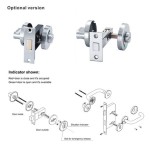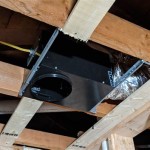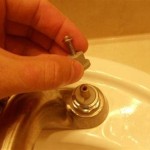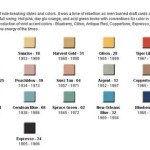Understanding and Selecting the Right Spout Bathroom Sink Faucet
The bathroom sink faucet is a critical component of any bathroom, significantly impacting both functionality and aesthetics. Among the various types of bathroom sink faucets, the spout faucet stands out for its diverse designs and operational mechanisms. Selecting the right spout bathroom sink faucet requires a thorough understanding of different spout types, material considerations, installation requirements, and relevant building codes.
Spout Types: A Functional and Aesthetic Overview
The spout is the part of the faucet that delivers water into the sink basin. Spouts come in a variety of shapes and sizes, each offering different aesthetic and functional properties. Understanding the differences between these types is crucial for making an informed decision.
High-Arc Spouts: High-arc spouts are characterized by their upwardly curved design, creating a significant vertical clearance between the spout and the sink basin. This design provides ample space for washing hands, filling containers, and general cleaning tasks. High-arc spouts are visually prominent and often chosen for their elegant and modern appearance. However, the higher water trajectory can sometimes lead to increased splashing, which should be considered when selecting a sink.
Low-Arc Spouts: In contrast to high-arc spouts, low-arc spouts feature a shorter, less pronounced curve. This design minimizes the vertical clearance but also reduces the likelihood of splashing. Low-arc spouts are generally considered more traditional in appearance and are suitable for smaller bathrooms or when a more understated aesthetic is desired. The reduced clearance may limit the ability to fill large containers directly in the sink.
Gooseneck Spouts: Gooseneck spouts are a type of high-arc spout that resemble the curved neck of a goose. They offer a distinctive and often dramatic visual appeal. Similar to other high-arc spouts, gooseneck spouts provide ample clearance and are well-suited for a variety of tasks. Their distinctive design makes them a popular choice for contemporary bathroom designs.
Waterfall Spouts: Waterfall spouts are designed to deliver water in a wide, flat stream, mimicking the appearance of a natural waterfall. These spouts are visually striking and create a relaxing ambiance. However, they may require a higher water pressure to function optimally and can be prone to splashing if the water flow is not carefully controlled.
Spout Reach and Angle: Beyond the overall shape, the reach and angle of the spout are also important considerations. The reach refers to the horizontal distance the spout extends over the sink basin. The angle refers to the direction the water is projected. An appropriately sized spout will direct the water stream towards the center of the sink basin, minimizing splashing and ensuring convenient access to the water. Measuring the sink before selecting a faucet is crucial to ensure proper fit and functionality.
Material Considerations for Spout Bathroom Sink Faucets
The materials used in the construction of a spout bathroom sink faucet significantly impact its durability, corrosion resistance, and overall aesthetic appeal. Different materials offer varying levels of performance and require different maintenance routines. Understanding these differences is critical for selecting a faucet that meets both functional and budgetary requirements.
Brass: Brass is a widely used material for faucet bodies due to its excellent corrosion resistance and malleability. Brass faucets are often coated with a protective finish, such as chrome, nickel, or bronze, to further enhance their durability and aesthetic appeal. It’s important to note that some brass faucets may contain trace amounts of lead, although lead-free options are increasingly prevalent and often mandated by building codes.
Stainless Steel: Stainless steel is another popular choice for bathroom sink faucets, prized for its durability, corrosion resistance, and hygienic properties. Stainless steel faucets are typically more expensive than brass faucets but offer superior longevity and resistance to stains and scratches. They are also naturally lead-free, making them a safer option for potable water applications.
Zinc Alloy: Zinc alloy is a less expensive alternative to brass and stainless steel. While zinc alloy faucets can offer a similar aesthetic appearance, they are generally less durable and more susceptible to corrosion. Zinc alloy faucets are often used in budget-friendly applications but may require more frequent replacement.
Plastic: Plastic faucets are the least expensive option but offer limited durability and aesthetic appeal. Plastic faucets are typically used in temporary or low-usage applications. They are lightweight and easy to install but are prone to cracking and discoloration over time.
Finishes: The faucet finish plays a crucial role in its overall aesthetic appeal and resistance to wear and tear. Common faucet finishes include chrome, brushed nickel, oil-rubbed bronze, and matte black. Chrome finishes are durable and easy to clean but can show fingerprints and water spots. Brushed nickel finishes offer a softer, more subtle appearance and are less prone to showing fingerprints. Oil-rubbed bronze finishes provide a traditional, antique look. Matte black finishes are a popular choice for contemporary bathrooms, offering a sleek and modern aesthetic.
When selecting a faucet material and finish, it’s important to consider the overall style of the bathroom and the level of maintenance required. More durable materials and finishes will generally require less maintenance and offer a longer lifespan, but they may also come at a higher cost.
Installation and Building Code Considerations
Proper installation is essential for ensuring the functionality and longevity of a spout bathroom sink faucet. Incorrect installation can lead to leaks, reduced water pressure, and potential damage to the plumbing system. Understanding the installation process and relevant building codes is critical for a successful project.
Faucet Configuration: Bathroom sink faucets are typically available in three configurations: single-hole, center-set, and widespread. Single-hole faucets are designed for sinks with a single faucet hole. Center-set faucets are designed for sinks with three holes spaced 4 inches apart. Widespread faucets are designed for sinks with three holes spaced 8 inches or more apart. Before purchasing a faucet, it’s important to determine the configuration of the sink and select a faucet that is compatible.
Water Supply Lines: Connecting the faucet to the water supply lines requires flexible supply tubes or rigid copper pipes. The size and type of the water supply lines must be compatible with the faucet connections. It’s also important to ensure that the water supply lines are properly cleaned and flushed before connecting them to the faucet to remove any debris that could clog the faucet’s internal components.
Drain Assembly: Most bathroom sink faucets include a drain assembly that allows the user to control the flow of water out of the sink. The drain assembly typically consists of a stopper, a flange, and a tailpiece. The drain assembly must be properly installed to prevent leaks and ensure proper drainage. Using plumber’s putty or silicone sealant around the flange is essential for creating a watertight seal.
Building Codes and Regulations: Building codes and regulations dictate the minimum standards for plumbing installations, including bathroom sink faucets. These codes typically address issues such as water conservation, lead content, and backflow prevention. Before installing a faucet, it’s important to check with the local building department to ensure that the faucet meets all applicable codes and regulations. Some jurisdictions require the use of low-flow faucets to conserve water, while others mandate the use of lead-free faucets to protect public health.
Professional Installation: While it’s possible to install a bathroom sink faucet as a DIY project, it’s often recommended to hire a licensed plumber, especially for complex installations or when dealing with older plumbing systems. A professional plumber has the expertise and tools necessary to ensure a proper installation and can identify and address any potential problems that may arise.
Selecting the right spout bathroom sink faucet involves careful consideration of spout types, material options, and installation requirements. By understanding these factors, property owners can make an informed decision that results in a functional, aesthetically pleasing, and compliant bathroom fixture.

Yasinu Single Handles Waterfall Spout Hole Bathroom Sink Faucet With Drain Kit Included In Brushed Nickel Ynaa970bn The Home Depot

Bathroom Faucet With Waterfall Spout Bath Sink Faucets Single Handle O Zap Fittings

Led Waterfall Spout Bathroom Sink Faucet Widespread 3 Holes Basin Brushed Nickel Com

Widespread Bathroom Sink Faucet Basin Waterfall Spout 3 Holes Mixer Tap Chrome

105 Cool Square Shaped Long Waterfall Spout Bathroom Sink Faucet Faucets Chrome Taps

Kaiying Bathroom Sink Faucet With Pull Out Sprayer Single Handle Kitchen Basin Mixer Tap For Hot And Cold Water Lavatory Down Vessel Rotating Spout Regular Brushed Gold

Straight Bathroom Sink Spout 1 2 Gpm K 27009 Kohler

Bwe Waterfall Tall Spout Single Hole Handle Vessel Sink Faucet Vanity In Matte Black A 96065h B The Home Depot

Juno Hook Shaped Spout Swivel Bathroom Faucet Freestanding Deck Mount Brass Dual Handle Sink

Waterfall Spout Bathroom Faucet Single Handle Vanity Sink Shein Usa
Related Posts







